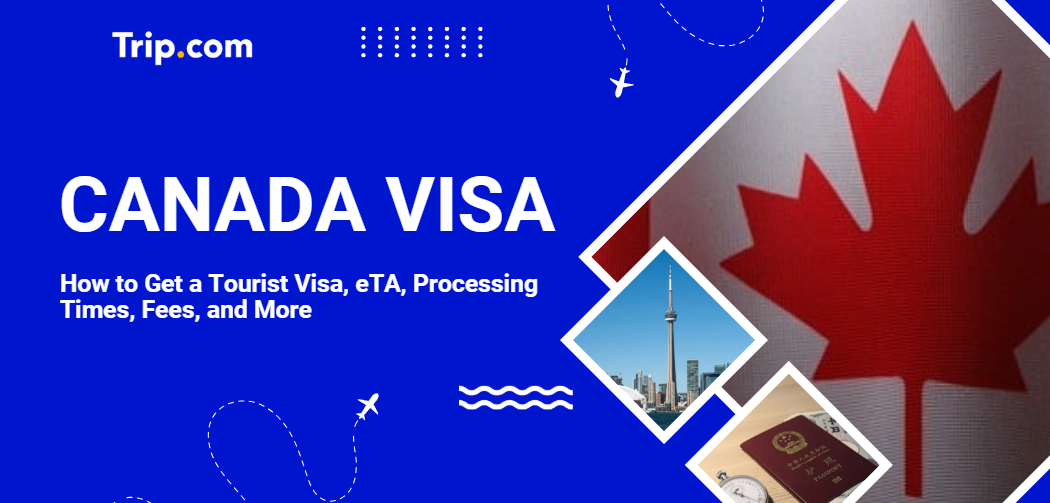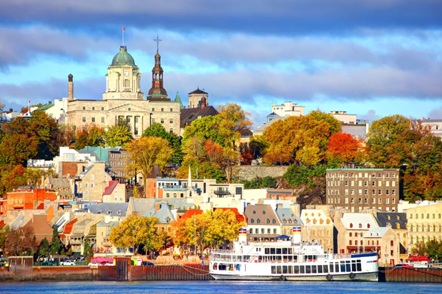
The vibrant cities and beautiful landscapes are likely to have you asking yourself, “How can I get a visa to Canada?”. Applying for a Canada tourist visa, so we have created this guide breaking down the different visa types along with the costs and necessary entry documents that you’ll need to obtain a Canada visa.
What is a Canada Visa?
A Canadian visa is a travel document that allows foreign citizens to enter Canada. There are a few different visa options, and the one that you need is directly related to your personal circumstances, such as citizenship, how you will travel to the country, and the duration of your stay.
We have broken down the different visa options below, including the visitor visa (TRV) and the Electronic Travel Authorization (eTA), which are the primary short-term options for tourists visiting Canada. Keep in mind that visa criteria can change quickly, so it’s important that you always check the most up-to-date information on Visit Canada’s website before applying for your visa.
Please note that if you're from the United States, Australia, New Zealand, the United Kingdom, and the EU, you don't need a visa to enter Canada if you’re traveling over land. However, you may still need to apply for an eTA before you’re allowed to board a flight to Canada.

Types of Canadian Visas
As mentioned, there are a few different types of short-term visa options as well as long-term options for people wanting to visit Canada. If you are unsure of which type of visa you need, you can find a full list of entry requirements by country or territory here.
Visitor Visa (TRV)
Confusingly referred to as a temporary resident visa or TRV, the visitors visa is one of the most common forms of Canadian visa used by tourists. Most travelers, with the exception of those countries listed above, need this visa to enter Canada. The visa can be single entry or multiple entry and can last up to 10 years, based on the discretion of the visa officer.
Canada eTA (Electronic Travel Authorization)
There are some nationalities that can apply for an electronic travel authorisation to Canada (eTA). In order to apply for this type of visa, you also need to hold a valid visa to the United States or have held a Canada visitor visa within the past 10 years. The eTA allows for up to six-month stays and is valid for five years. However, you can only use this option if you're flying into Canada. It can not be used at land borders. You can find a full list of the visa-exempt countries here.
Work, Study, and Permanent Residency Visas
If you hope to stay in Canada long-term and work, study, or retire there, you must apply for a visa specific to that purpose. These visas are harder to obtain than tourist visas, and you must provide additional documents such as offers of employment, attestation letters from designated learning institutions, and proof of financial support. You can find a full list of the required documents for each type of visa on the Canadian Immigration website.
From now until stock last, you can enjoy up to 8% off hotel deals on Trip.com when you register as a member on desktop or app!

Who Can Get a Canada Visa?
Canada Visa Eligibility Requirements
In order to apply for a Canadian visa, you must have a valid passport from your country of citizenship, be in good health, have no criminal record, have enough money for your stay, and be able to convince Canadian immigration authorities that you have ties to your home country and intend to leave Canada at the end of your visit.
Who Needs an eTA vs. a Visitor Visa?
The Canada visitor visa is available for people from countries around the globe as long as they can meet the basic immigration requirements listed above. However, the eTA is available only for people from a select list of countries who are flying into Canada. The recipient must also have had a Canada visitor visa within the past 10 years or hold a valid US visa.

How to Apply for a Canada eTA
Below, you’ll find a step-by-step guide on how to apply for a Canada visa and the documents required.
Step-by-Step eTA Application Process
In order to apply for an eTA, you’ll need a working email address, a payment method such as a debit card or credit card, and a valid passport. No biometrics are needed to apply for an eTA.
- Register for an IRCC Portal account.
- Apply for the eTA through the IRCC portal.
- Pay $7 CAD right after you complete the form using a credit card.
- Receive an email confirming your application has been received and your visa approval or a request to provide additional documents.

How to Apply for a Canada Visitor Visa (TRV)
You can apply online through the IRCC website or via a paper application sent to the Canadian visa office in your country.
- Register for an IRCC Portal account.
- Apply for the TRV through the IRCC portal OR send a paper application to a visa processing center.
- Receive a Biometric Instruction Letter and set up an appointment to submit biometrics.
- Submit your biometrics at a local visa center.
- Wait for your visa to process.
- Receive your visa or get a rejection letter.
Online vs. Paper Application: Which Is Better?
It’s generally easier, cheaper, faster, and more convenient to apply online through the IRCC website than by sending in a paper application.
Required Documents for a Canada Visitor Visa
To apply for a TRV, you’ll need a visa application form, passport, passport-sized photos, proof of financial support, travel itinerary, invitation letter (if applicable), and proof of ties to your home country.
Canada Visa Biometrics Process
Unless you are exempt, most Canadian TRV visa applications will require you to provide biometric data such as fingerprints or photographs. If this is the case, you need to pay a $85 CAD biometric fee while applying for your visitor visa. You’ll then receive a Biometric Instruction Letter (BIL) after applying for your visa, which will provide further information on where to submit your biometrics. It’s important that you make an appointment as soon as you receive this so you don’t delay the visa process further. You will then need to visit a designated Visa Application Center or an Application Support Center to submit your biometrics on the day of your appointment.

Canada Visa Fees and Processing Time
The Canada visa fees and processing times are very different depending on whether you’re applying for a visitor visa or an electronic visa authorization.
Visitor Visa vs. eTA Costs
| Visitor Visa | Electronic Travel Authorization (eTA) | |
| Application Fee | $100 CAD | $7 CAD |
| Biometric Fee | $85 CAD | Not Applicable |
How Long Does a Canada Visa Take?
The processing times for tourist visas vary widely based on your country of citizenship and can take anywhere from a few days to months. The Canadian immigration website offers a handy tool that you can use to see how long a visa is likely to take to process before you apply. We highly recommend checking this before you make any travel arrangements in order to avoid losing money.
Most eTA applications are improved within a few minutes. They can take a few days under extenuating circumstances, so it's always a good idea to apply well in advance.
How to Extend Your Canada Visa
If you find yourself falling in love with Canada and want to stay longer, you’ll be happy to know that it’s possible to extend your visa.
Visitor Record Application Process
If you want to extend your stay in Canada, you’ll need to apply for a visitor record roughly 30 days before your visa expiration date. You can apply online or on paper by completing and submitting an IMM 5708 form.
Can You Work or Study on an Extended Visa?
While you're unable to work on an eTA or a visitor visa, it's possible to obtain a work or study visa.
Canada Visa Denials: Common Reasons & Solutions
The Canadian government may reject your Canadian visa application for a wide variety of reasons. Some of the most common ones include a lack of ties to your home country, insufficient financial resources, and incomplete or inaccurate applications. To avoid a Canadia visa rejection, it's important to provide all the necessary documentation when applying for your visa, as this can greatly help reduce the risk of it getting rejected.
How to Avoid Visa Rejection
When applying for a visa for Canada, it's important to prove that you have strong ties to your home country. This could include things like owning your own business or home or having a spouse and children. You need to prove that you're unlikely to remain illegally in Canada and plan on returning home after your trip there.
You should also double-check and then triple-check that all of your documentation is accurate and up-to-date.
Reapplying After a Canada Visa Denial
If your Canadian visa application is denied, it’s possible to reapply IF you have additional documentation or information that can address the reasons that your initial application was denied. Your rejection letter should explain why your visa was not approved. If your unsure of how to proceed, you can also contact a Canadian immigration expert who can assist you with your application.

 13521 booked
13521 booked












